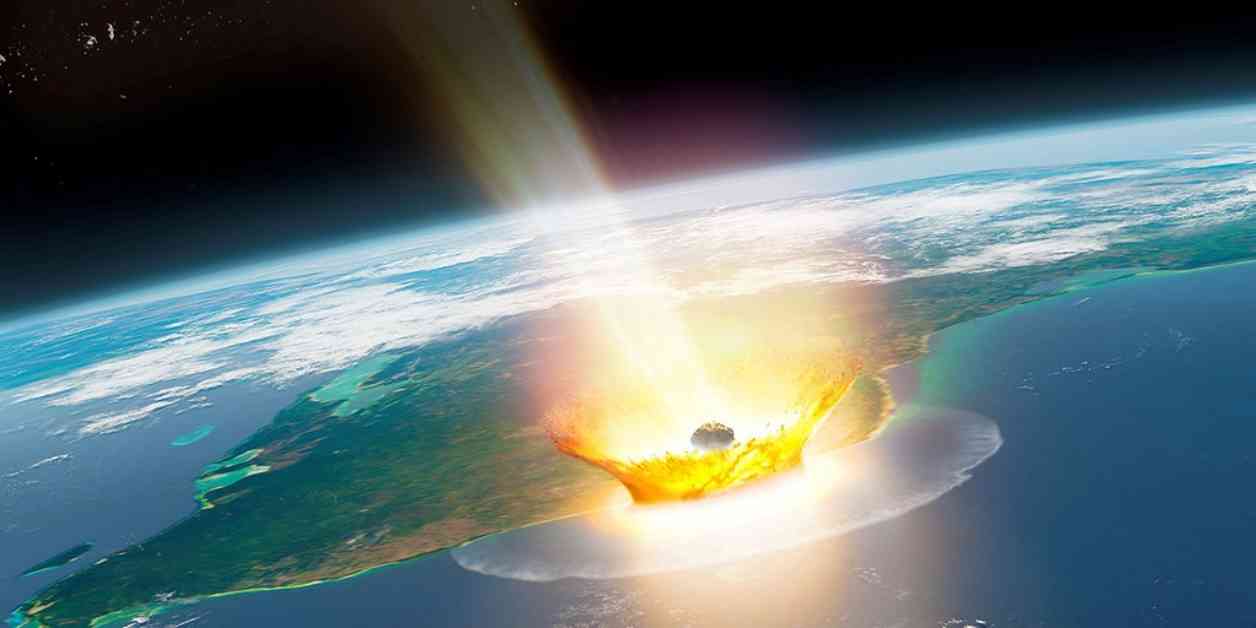The Origins of the Asteroid that Killed the Dinosaurs
In a groundbreaking new study published in Science, scientists have revealed that the asteroid responsible for wiping out the dinosaurs 66 million years ago originated beyond the orbit of Jupiter. Led by Mario Fischer-Gödde of the University of Cologne in Germany, the research team examined the geological remains of the impact site in Chicxulub, Mexico, to make this determination. By measuring ruthenium isotopes in the impact deposits and comparing them with various classes of meteorites, the researchers were able to pinpoint the asteroid’s origins in the outer Solar System.
According to the study, the Chicxulub impactor was identified as a carbonaceous asteroid, a type of celestial body that typically forms in the colder regions of the Solar System. This finding is significant because it contrasts with previous assumptions that the asteroid may have originated closer to Earth. Additional measurements of five other impact sites showed that those asteroids were composed of silicate material and formed in the inner Solar System, highlighting the unique nature of the Chicxulub impactor.
The Impact of the Chicxulub Asteroid
The impact of the Chicxulub asteroid at the end of the Cretaceous period had far-reaching consequences for life on Earth. The collision produced a global stratigraphic layer that marked the boundary between the Cretaceous and Paleogene eras. This layer contained elevated concentrations of platinum-group elements, including ruthenium, which provided further evidence of the asteroid’s extraterrestrial origins.
The Chicxulub impact is believed to have triggered a mass extinction event, leading to the demise of the dinosaurs and numerous other species. The catastrophic event caused widespread devastation, altering the Earth’s climate and ecosystems in profound ways. The aftermath of the impact reshaped the planet’s geology and paved the way for the rise of mammals and eventually, humans.
Implications of the Study
The findings of the study shed new light on the nature of the asteroid that ended the reign of the dinosaurs. By identifying the Chicxulub impactor as a carbonaceous asteroid that formed beyond Jupiter, scientists have gained valuable insights into the mechanisms of celestial collisions and their impact on Earth. This discovery challenges previous assumptions about the origins of the asteroid and highlights the complexity of the Solar System’s history.
Mario Fischer-Gödde, the lead researcher on the study, emphasized the significance of understanding the role of chance in shaping the course of evolution on Earth. Reflecting on the impact of the Chicxulub asteroid, he remarked, “Without this impact, what would our Earth look like today? We should probably value, a bit more, that we are around and this is maybe a lucky coincidence that everything came to place like it is today.”
In conclusion, the study of the asteroid that killed the dinosaurs has provided valuable insights into the dynamics of our Solar System and the impact of cosmic events on our planet. By unraveling the origins of the Chicxulub impactor, scientists have deepened our understanding of the forces that have shaped the history of life on Earth. This research opens new avenues for exploration and discovery in the field of planetary science, offering a glimpse into the mysteries of the cosmos and our place within it.




